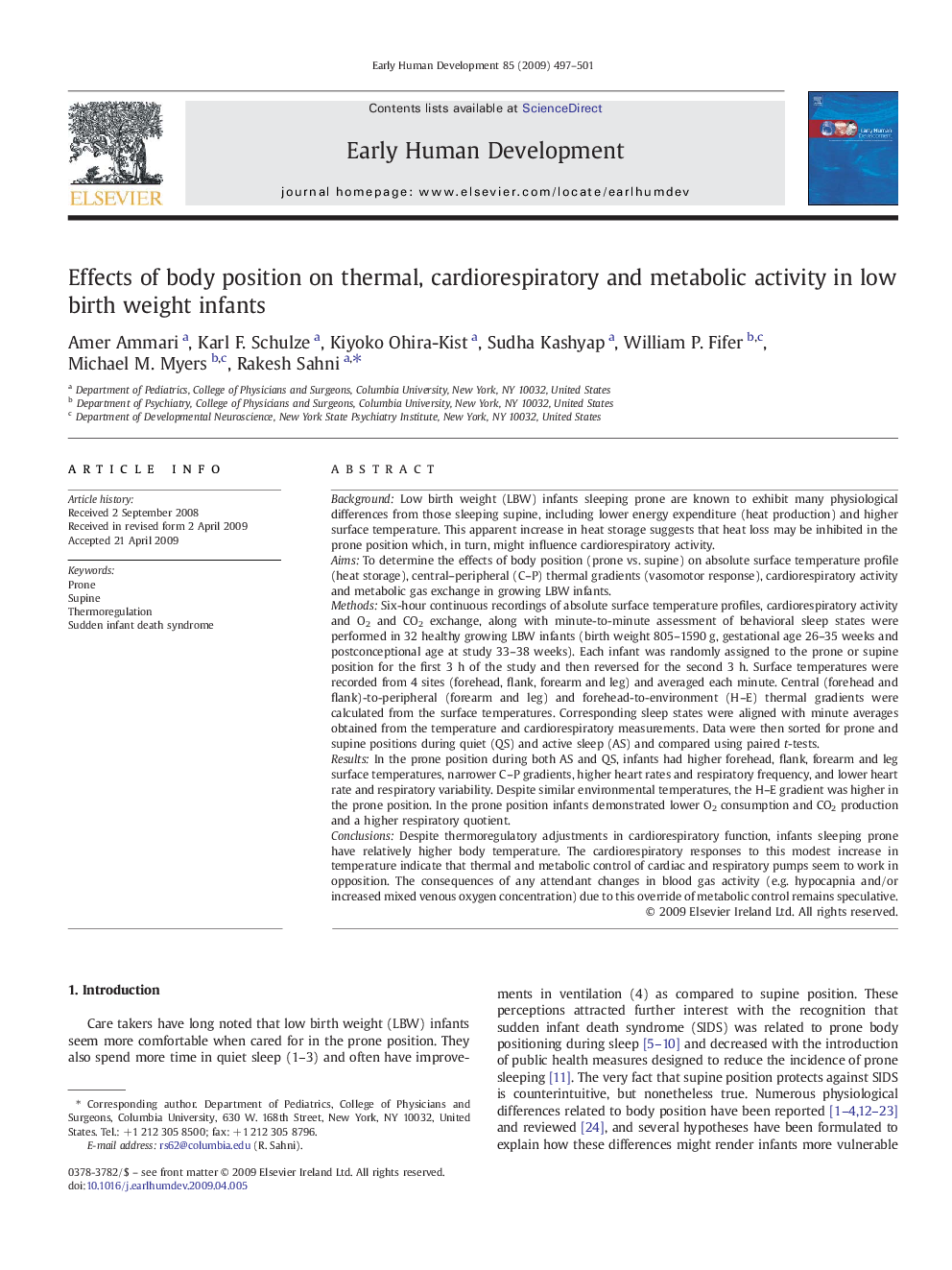| Article ID | Journal | Published Year | Pages | File Type |
|---|---|---|---|---|
| 3918553 | Early Human Development | 2009 | 5 Pages |
BackgroundLow birth weight (LBW) infants sleeping prone are known to exhibit many physiological differences from those sleeping supine, including lower energy expenditure (heat production) and higher surface temperature. This apparent increase in heat storage suggests that heat loss may be inhibited in the prone position which, in turn, might influence cardiorespiratory activity.AimsTo determine the effects of body position (prone vs. supine) on absolute surface temperature profile (heat storage), central–peripheral (C–P) thermal gradients (vasomotor response), cardiorespiratory activity and metabolic gas exchange in growing LBW infants.MethodsSix-hour continuous recordings of absolute surface temperature profiles, cardiorespiratory activity and O2 and CO2 exchange, along with minute-to-minute assessment of behavioral sleep states were performed in 32 healthy growing LBW infants (birth weight 805–1590 g, gestational age 26–35 weeks and postconceptional age at study 33–38 weeks). Each infant was randomly assigned to the prone or supine position for the first 3 h of the study and then reversed for the second 3 h. Surface temperatures were recorded from 4 sites (forehead, flank, forearm and leg) and averaged each minute. Central (forehead and flank)-to-peripheral (forearm and leg) and forehead-to-environment (H–E) thermal gradients were calculated from the surface temperatures. Corresponding sleep states were aligned with minute averages obtained from the temperature and cardiorespiratory measurements. Data were then sorted for prone and supine positions during quiet (QS) and active sleep (AS) and compared using paired t-tests.ResultsIn the prone position during both AS and QS, infants had higher forehead, flank, forearm and leg surface temperatures, narrower C–P gradients, higher heart rates and respiratory frequency, and lower heart rate and respiratory variability. Despite similar environmental temperatures, the H–E gradient was higher in the prone position. In the prone position infants demonstrated lower O2 consumption and CO2 production and a higher respiratory quotient.ConclusionsDespite thermoregulatory adjustments in cardiorespiratory function, infants sleeping prone have relatively higher body temperature. The cardiorespiratory responses to this modest increase in temperature indicate that thermal and metabolic control of cardiac and respiratory pumps seem to work in opposition. The consequences of any attendant changes in blood gas activity (e.g. hypocapnia and/or increased mixed venous oxygen concentration) due to this override of metabolic control remains speculative.
